Enduring Partnerships
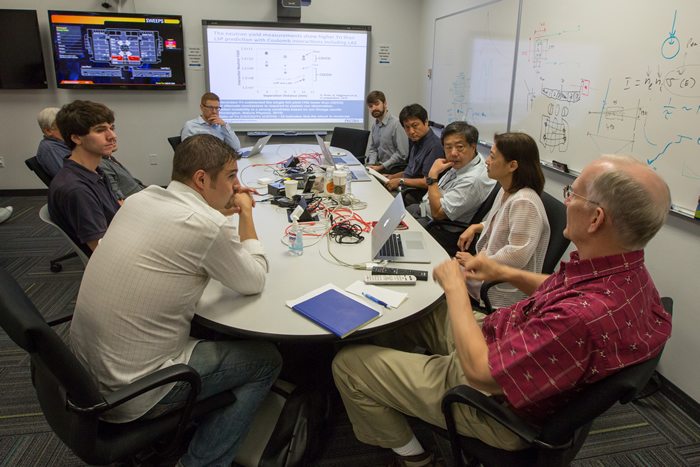
Partnering to Further Science & Technology
International Collaboration in Diagnostics
A multi-laboratory Joint Central Diagnostic Team, funded through the inertial confinement fusion program at the various National Nuclear Security Administration (NNSA) laboratories, was formed in the mid-1990s to coordinate efforts to develop and implement a comprehensive suite of diagnostics on NIF.
As a result, NIF has more than 120 diagnostics available to measure and analyze experimental results. And every year, NIF and its partners develop about a dozen new diagnostics to meet new measurement challenges.
This continuing effort is an international collaboration of researchers from Lawrence Livermore, Lawrence Berkeley, Los Alamos (LANL), Brookhaven, and Sandia national laboratories; General Atomics; National Security Technologies, LLC (NST); the Laboratory for Laser Energetics (LLE) at the University of Rochester; the Aomic Weapons Establishment (AWE) in the United Kingdom; and the French Alternative Energies and Atomic Energy Commission (CEA). Scientists from a number of universities also contribute, including researchers from MIT, Duke, Colorado School of Mines, UCLA, and State University of New York College at Geneseo.
Sandia, for example, worked with LLNL to develop a number of key diagnostics, including the Icarus hybrid-CMOS imager, the STAR (sample test and recovery) radiation-effects diagnostic, 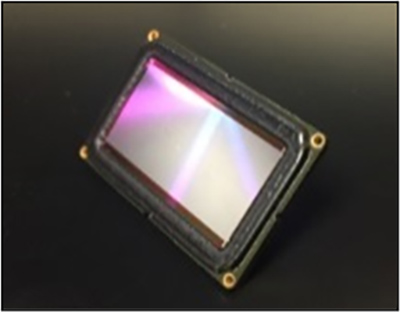 The Icarus detector from Sandia National Laboratories. the Wolter x-ray microscope, and the RAGS (radiochemical analysis of gaseous samples) cryogenic system that collects the gaseous debris from the NIF Target Chamber after a laser shot and purifies and analyzes the debris for radioactive gas products.
The Icarus detector from Sandia National Laboratories. the Wolter x-ray microscope, and the RAGS (radiochemical analysis of gaseous samples) cryogenic system that collects the gaseous debris from the NIF Target Chamber after a laser shot and purifies and analyzes the debris for radioactive gas products.
The U.K.’s AWE has supplied NIF with physics packages that study radiation transport for stockpile stewardship. LANL, along with the Laboratory for Laser Energetics (LLE) and LLNL, led the development of a third neutron imaging system that provides a 3D image showing the size and shape of the burning deuterium-tritium plasma during the ignition stage of a NIF implosion.
And LLE, with funding from the Defense Threat Reduction Agency, developed NIF’s first streaked x-ray spectrometer, the NXS, for a variety of time-resolved, high-resolution spectroscopic experiments.
Experimental and Technology Partnerships
Here are just a few examples of NIF & Photon Science’s experimental and technology partnerships:
- Using NIF, LANL studies hydrodynamic instabilities of a thin target layer and its transition to turbulence in a multiple shock system.
- Sandia, AWE, the Missile Defense Agency, and the Naval Research Laboratory study the effects of system-generated electromagnetic pulses and other types of radiation on weapon components (see National Security Applications).
- The Defense Advanced Research Projects Agency and the U.S. Navy are using LLNL-developed small-diameter, lightweight fiber optic cable to facilitate communications at sea.
- In the NNSA-funded EPEC (energy-partitioning, energy-coupling) project to improve U.S. nuclear forensics capabilities, LLNL researchers were joined by scientists from NST, General Atomics, Ktech Corporation (now Raytheon), and the Naval Postgraduate School in Monterey, California.
- LANL researchers led the development of an innovative technique for diagnosing the properties of the plasma created during inertial confinement fusion implosions on NIF.
- A novel optical fiber developed by researchers at the Laboratory for Laser Energetics (LLE) at the University of Rochester in collaboration with LLNL and Fibercore in the UK is capable of both amplifying and polarizing light.
- A Discovery Science campaign led by researchers from Oxford University in the U.K. is seeking the origin of giant intergalactic magnetic fields, and University of Michigan researchers are using NIF to study the hydrodynamics of supernovas.
- A Discovery Science campaign led by SLAC National Accelerator Laboratory used NIF to study the inner workings of astrophysical shock waves by creating a hydrodynamically scaled version of the shock in the laboratory.
- In a unique cross-disciplinary collaboration between the fields of plasma physics, nuclear astrophysics, and laser fusion, a team of researchers from LLNL, Ohio University, MIT, and LANL performed experiments on NIF in conditions like those of stellar interiors.
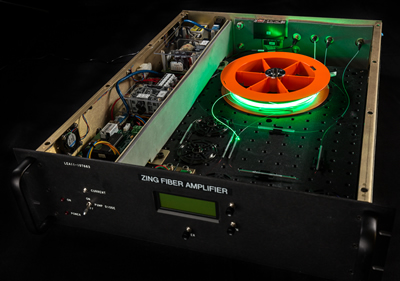 PZ (polarizing) gain fiber is the first optical fiber that simultaneously amplifies and polarizes light. It allows greater power efficiency, improves performance, and incorporates unique structural elements.
PZ (polarizing) gain fiber is the first optical fiber that simultaneously amplifies and polarizes light. It allows greater power efficiency, improves performance, and incorporates unique structural elements. 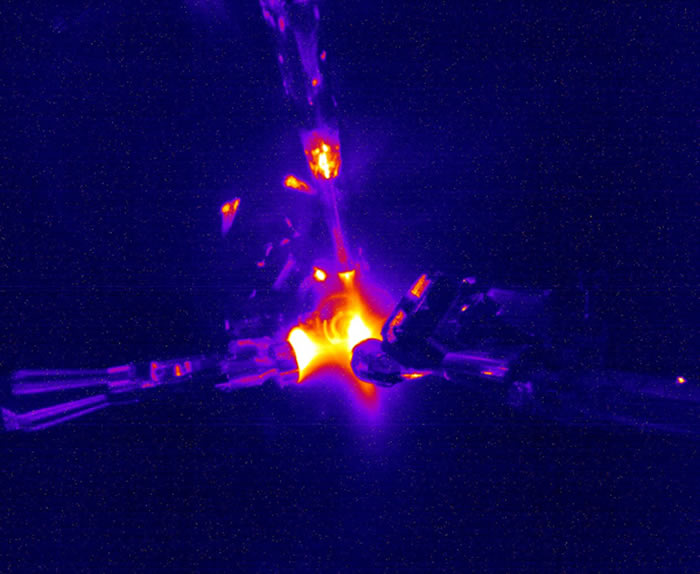 Shot-time image from a NIF Discovery Science experiment simulating stellar nucleosynthesis fusion reactions. The multi-institutional team includes researchers from MIT, the University of Rochester, Indiana University, Ohio University, LANL, and LLNL.
Shot-time image from a NIF Discovery Science experiment simulating stellar nucleosynthesis fusion reactions. The multi-institutional team includes researchers from MIT, the University of Rochester, Indiana University, Ohio University, LANL, and LLNL. Many more partners—small and medium-sized companies as well as universities—support optics fabrication, facility infrastructure projects, and other aspects of NIF operations.
Partnering with NIF Users
Because NIF is a one-of-a-kind facility, it offers opportunities for research that were impossible a decade ago and are still unavailable anywhere else in the world.
Discovery Science experiments conducted by NIF users range from deep in the Earth to the far reaches of the universe. Basic science research on the core density of supermassive Earth-like planets has not only helped astrophysicists better understand planet formation, it has helped Stockpile Stewardship Program scientists develop techniques to examine how weapons materials behave at immense pressures. Scientists studying proton behavior in magnetic fields have provided useful data for the SSP program as well.
NIF Construction Partnerships
The challenges associated with building the world’s largest laser were enormous, particularly in managing such a large, technically complex project, developing laser and optical technologies, and constructing and aligning the super-clean environmental enclosures that contain the 192 laser beams. The construction effort alone required the involvement of the best of America’s construction industries.
Scientists recognized that the giant facility’s technical successes depended upon the most advanced products and processes offered by hundreds of American high-technology companies. As a result, Lawrence Livermore engineers and scientists partnered with manufacturing companies in optics, communications, integrated circuits, computer controls, diagnostics, and precision parts fabrication.
Multiple Advances in Optics
Companies such as Cleveland Crystals, Kodak, Hoya Corp. USA, SCHOTT North America, Spectra-Physics, Tinsley Laboratories, Inabata & Co., Zygo Corp., and many others developed new optical components, instruments, and mass-production manufacturing processes to ensure that NIF’s optics were produced within performance, cost, and schedule requirements.
Many components in NIF’s laser system represent significant advancements of current technologies, while other components were entirely new designs. For example, a revolutionary process developed by LLNL and two industrial partners, SCHOTT North America and Hoya Corp. USA, produced meter-size plates of laser glass at a rate 20 times faster and 5 times cheaper than was possible with previous technology, and the glass has much better optical quality (see The Seven Wonders of NIF). More than 3,000 pieces of laser glass amplifier slabs (neodymium-doped phosphate glass) were manufactured by Hoya Corp. and SCHOTT North America.
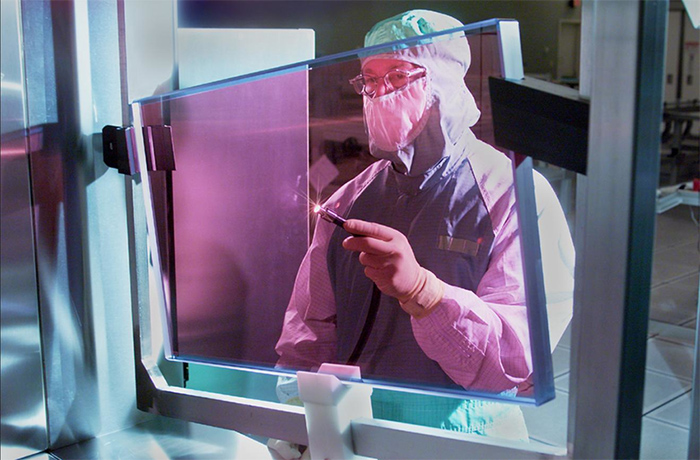 A technician examines one of 3,072 laser glass slabs used to amplify the NIF laser from a picojoule to 4 megajoules of infrared light.
A technician examines one of 3,072 laser glass slabs used to amplify the NIF laser from a picojoule to 4 megajoules of infrared light. 


